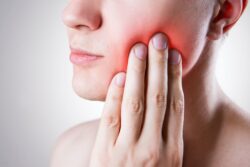A dentist might recommend the extraction of a tooth if the tooth suffers significant damage that could put the rest of your smile in danger. This procedure involves cutting the affected tooth out of the gum tissue. You can anticipate some downtime in order to recover from oral surgery.
You should be careful with the healing surgical sites so that you do not hurt the blood clot that naturally forms in these areas of the mouth. If the clot becomes dislodged, you can expose nerves and bone which will result in a painful condition called dry socket.
You will need urgent intervention from your dentist to treat dry socket. So you should take measures to avoid developing it in the first place. Read on to find advice from your dentist that can help you prevent dry socket after a tooth extraction procedure.



Practice Careful Oral Hygiene
After a tooth extraction, you still need to practice your usual oral hygiene routine. This regimen removes plaque, food particles, and other residues that could put your oral health at risk. Skipping this routine could also increase your risk of oral infections, including near your healing surgical sites.
However, you must move your toothbrush and floss carefully as you clean your teeth so that you do not hurt your surgical sites and cause dry socket. Your dentist will provide you with aftercare guidelines that can ensure you can thoroughly clean your smile without harming healing blood clots.
Avoid Harsh Oral Movements
The combination of airflow and muscle movement when you perform a sucking motion with your mouth could pose a high risk of giving you dry socket. It could easily dislodge a healing blood clot, and so could the action of spitting. For this reason, you should avoid both sucking and spitting for at least a week after a tooth extraction.
This means that you should not use mouthwash or a straw during this period. The inhalation from smoking can create a similar threat, so you should stop smoking during this recovery. It may be easier to abstain from this habit when you cut back on smoking ahead of your procedure.
Stick to Soft-Textured Foods
When you return home after a tooth extraction and anesthetics have worn off, your mouth might feel sore. It may feel more comfortable to eat soft-textured foods for the first 48 hours after this treatment. But you should also stick to this type of diet in order to prevent dry socket.
Hard, sticky, and chewy foods can easily harm a blood clot at the surgical site, which could cause dry socket. Choose softer foods like oatmeal, yogurt, and mashed potatoes to protect your smile.
You can reintroduce more solid foods after two days. But revert back to soft foods if you notice pain when chewing. Call your dentist if you notice severe pain that you cannot manage on your own because this could point to dry socket.
